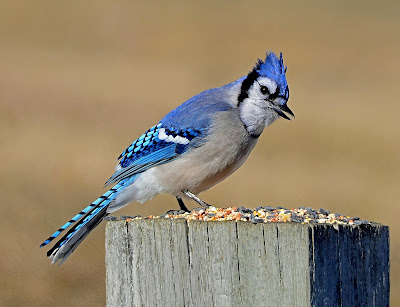Nature News: Mummichogs are stout little fish found in salt marsh pannes
This is one of the best times of year to visit an estuary (the brackish, marshy area where a river meets the sea). The bright green of the newly grown salt marsh grass is interrupted by pools of water (salt marsh pannes) that reflect the sky like a mirror and that, on a warm summer’s day, writhe with life.
Countless tiny fish swim along the edges of the pools and flip at the surface. Like darting shadows they are very hard to see, you only know they are there when they move. Those little fish are collectively called minnows (as are all small fish used as bait). I occasionally put traps into salt marsh pannes and streams not as bait but just to see what is there. The two types of minnows I most often find are mummichogs and sticklebacks. I love these little fish. Aside from the fact that they are cute - little bodies and big eyes always have a certain appeal - they are also some of the hardiest residents of a New England estuary.
Mummichogs (aka killifish) are stout little fish and only reach 4 inches in length at maturity. A distinctive feature of the mummichogs is their thick caudal peduncle - that’s the part of the fish’s body to which the tail fin is attached. The males are mottled dark greenish to steel blue above, with some irregular stripes on the sides and pale yellow undersides. Males change color when ready to breed - darkening above and becoming more brilliant yellow below. The females are a pale olive or tan year-round. The name “mummichog” comes from the Narragansett term which means swimming or moving in groups. You’ll almost never find a lone mummichog, they prefer big schools.
Sticklebacks are also small; reaching sexual maturity at about 2 inches in length with a maximum size of less than 4 inches. As you might expect, sticklebacks have spines on their fins. When you catch them in a trap - unlike mummichogs that engage in a lot of frantic wriggling - sticklebacks stiffen their bodies, sticking out their spines and making them such a thorny mouthful that predatory fish will often spit them out rather than attempting an uncomfortable swallow.
While I routinely find both sticklebacks and mummichogs in salt pannes, mummichogs, in particular, are able to withstand the harsh conditions of a salt panne. Salt pannes are shallow depressions in the surface of the salt marsh that lack vegetation. They only fill with rainwater or with the twice-a-month spring tides (extra-high tides caused by the full and new moon) and so can dry out. Pannes can get very hot in the summer and freeze solid in the winter. Salinity can vary from extremely concentrated salt water (much higher salinity than seawater if it is hot and the water has evaporated off) to almost fresh after a rainstorm. As pannes heat up in summer, the water loses oxygen. Tough conditions for a fish to live in, yet these little fish manage to survive.
A little-known fact about the mummichog is that because of this ability to withstand variable and stressful conditions it was the first fish sent to space. Back in 1973 mummichogs were sent up to Skylab3 as subjects of a study on the effects of zero gravity on fish. Upon arrival at Skylab the fish swam in disoriented loops - a behavior that scientists think is equivalent to motion sickness in humans. After a few days the fish adjusted to their surroundings, they oriented to the artificial lights by always swimming so their dorsal side was toward the light - their newly defined “up.” Mummichogs make a good role model for the rest of us - tough, resilient, able to withstand almost anything, from a dried-out salt panne to the sterile zero gravity of space.
Susan Pike, a researcher and an environmental sciences and biology teacher at St. Thomas Aquinas High School, welcomes your ideas for future column topics. She may be reached at spike3116@gmail.com. Read more of her Nature News columns online.




Comments
Post a Comment